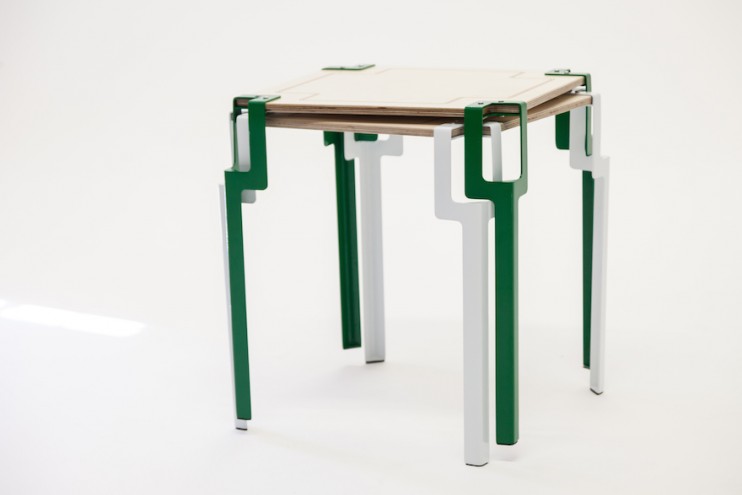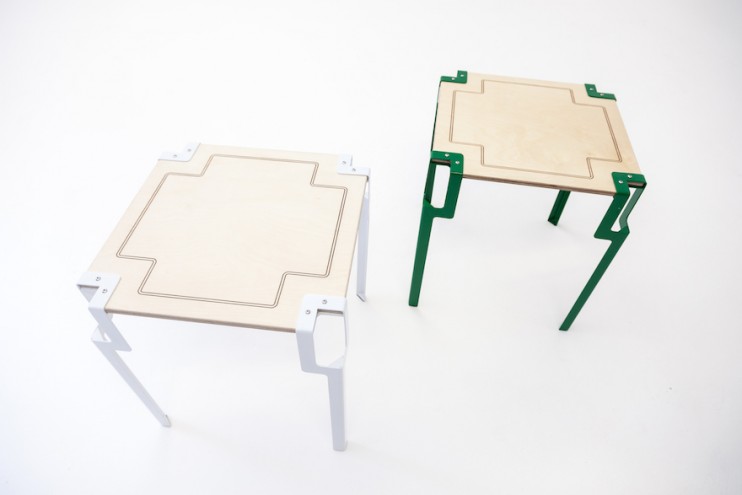Part of the Project
In Siyanda Mbele’s childhood home in Umlazi, a township of Durban, traditional Zulu furnishings were kept packed away in storage boxes to be brought out only on special occasions. Later on, as an interior design student at the Durban University of Technology, his designs sought to apply Zulu decorative traditions to contemporary, functional pieces.
“If you look at traditional Zulu design, architecture, products – they are very minimal and bold. It’s this boldness that I have re-introduced in my work through the confident use of colour and large-scale patterns,” says Mbele. “When I use Ndebele culture, I break it down to its simplest form and pattern.”
His first product was the Nandini table, which interpreted Ndebele, Venda and Zulu patterns in the stepped, geometric shape of its legs. The unusual piece struck a chord with international trend forecaster Li Edelkoort, who included it in her curation of Totemism: Memphis Meets Africa, an exhibition co-produced by Design Indaba and held at the 2013 Expo.
“Nandini” is the Ndebele word for “nice”. In the final year of his studies at this stage, he was “just playing” with his designs, he says. But the interpretation of traditional African design elements in current-day pieces that match our modern lifestyles has thread its way through his work ever since.
As Mbele has learned more and grown as a designer, the Nandini table has evolved. Chosen for Design Indaba’s Emerging Creatives programme in 2014, he was one of a small group who received additional mentoring from established designers. He was paired with Durban designers Greg and Roche Dry of Egg Designs.
“There was a huge stress on having a story behind your product,” he says about what he learned from the husband-and-wife team who have created some of South Africa’s most iconic furniture. “And also an emphasis on craftsmanship: I learnt it’s better to have one well-designed product then five half-hearted attempts.”
The Nandini table thus became his focus.
Its next step was facilitated by his participation last November in an incubation programme sponsored by the Department of Arts and Culture and the South African Bureau of Standards (SABS) in association with Design Indaba. While his mentorship with Egg focussed on developing his aesthetics and narrative, the SABS Incubation Programme focussed on the business of design. Mbele learned how to commercialise his plans for the Nandini table.
“You need to know your aesthetic and what works for you, and where you want to come from in your product before you can begin to commercialise. It was important for me to get that first. The rest was pretty organic.”
His mentors in the incubation programme offered him a choice: start from scratch or work with what he had. He decided to persist with the table, this time with designers to guide him through every decision he made.
“I learnt how not to be a starving designer: instead of hand painting, for example, I powder coat, and now I use a laser-cutter to engrave the patterns.”
A month later the Pinda collection was born out of the Nandini range: this time named from the Ndebele word “phinda”, which – appropriately – means “again”. The modular Pinda table is made of birch plywood with a choice of a variety of coloured steel legs that can easily be mixed or swapped around. The shape of the legs allows for the tables to be easily stacked on top of one another.
“It is a continuous process I am going through, again and again and again,” he says of the iterative development of his product. “I want to extend the range and make coffee tables and dining tables and side tables. And all of them can be stacked. It’s continuous.”
As part of the incubation programme Mbele was encourage to seek feedback from potential customers, asking if they like assembling their own furniture and if flat-pack products appeal to them. Every person offered a different answer for how the table would be used.
“The table became more about the customer and less about myself: more about the people using it in their homes. I toned down the colours and noticed that people gravitated towards raw wood, so the table became natural wood instead of painted. That drove the change from MDF to birch plywood with patterns etched into the tabletop.”
Mbele is now prototyping a lamp and dining room table for the Pinda range, with a central feature being the geometric shape used in the metal legs of the stackable table.















